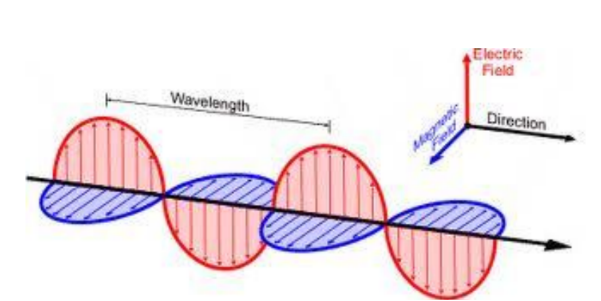The Electromagnetic Spectrum
Electromagnetic Waves
James Clerk Maxwell’s (1831 – 1879) crowning achievement was to show that a beam of light is a travelling wave of electric and magnetic field, an electro-magnetic wave.
In Maxwell’s time, the visible, infrared and ultraviolet form of light were the only electromagnetic waves known. Heinrich Hertz then discovered what we now call radio waves and verified that they move through the laboratory at the same speed as visible light. We now know a wide spectrum of electromagnetic waves. The Sun, being the dominant source of these waves, continually bathes us with electromagnetic waves throughout this spectrum.
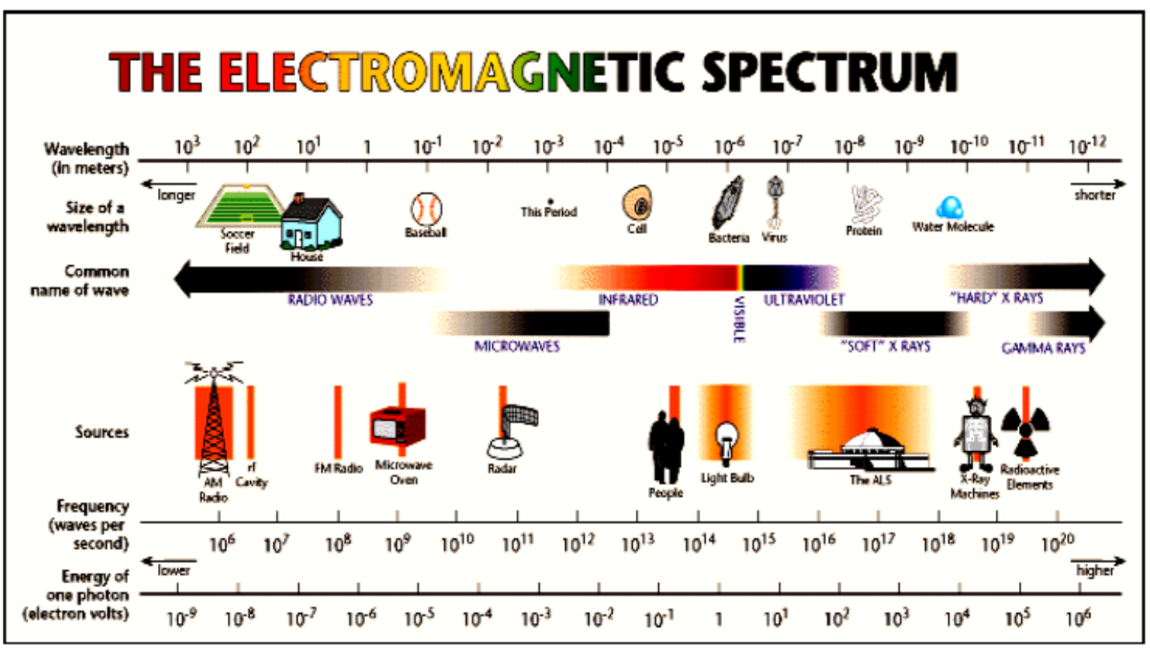
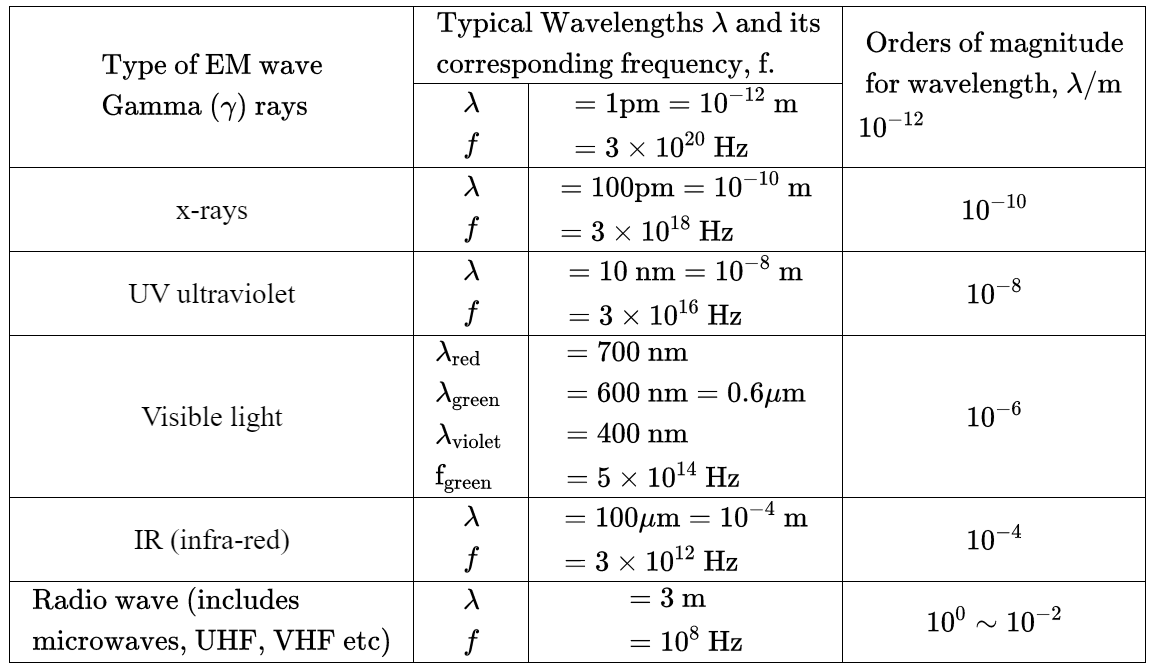
Properties of Electromagnetic Waves
1) EM waves have the same speed, $c$, in vacuum $\left(c \approx 3 \times 10^8 \mathrm{~m} \mathrm{~s}^{-1}\right)$.
2) EM waves consist of oscillating electric and magnetic fields that are perpendicular to each other.
3) EM waves are all transverse waves.
Energy $(E)$ and Intensity $(I)$ of a Progressive Wave
When we set up a wave on a stretched string, we provide energy for the motion of the string. As the wave moves away from us, it transports that energy as both kinetic energy and elastic potential energy.
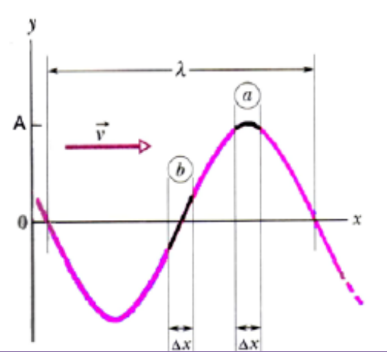
Kinetic Energy
An element of the string of mass $\Delta m$, oscillating transversely in simple harmonic motion as the wave passes through it, has KE associated with its transverse velocity $\vec{u}$.
- When the element is rushing through its $y=0$ position (element $b$ in the diagram), its transverse velocity – and thus its $\mathrm{KE}$ – is a maximum.
- When the element is at its extreme position $y=A$ (element a), its transverse velocity – and thus its KE – is zero.
Electromagnetic Wave : Electric Field & Magnetic Field
- A light wave is an electromagnetic wave that travels through the vacuum of outer space.
- Electromagnetic wave is a transverse wave that has both an electric and a magnetic component.
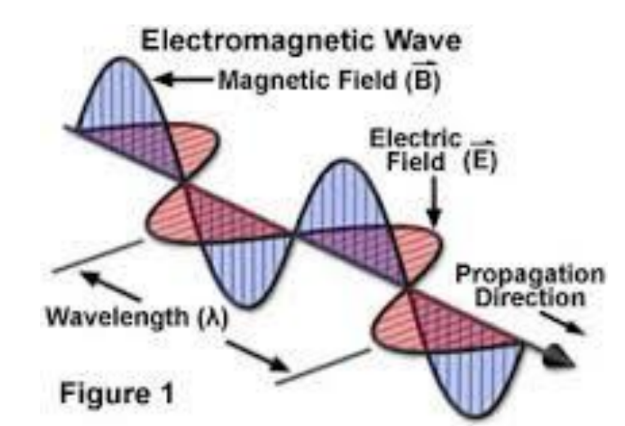
Electromagnetic Wave : Electric Field & Magnetic Field
- A light wave that is vibrating in more than one plane is referred to as unpolarized light.
- Light emitted by the sun, by a lamp in the classroom or by a candle flame are examples of unpolarized light.
- Such light waves are created by electric charges and vibrate in a variety of directions.
